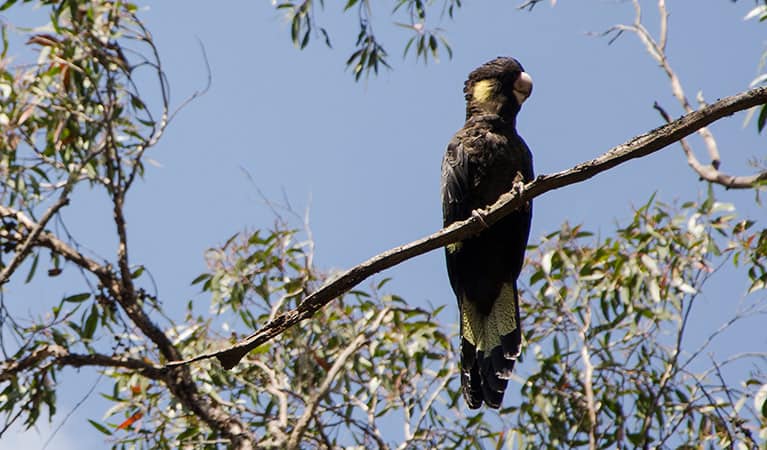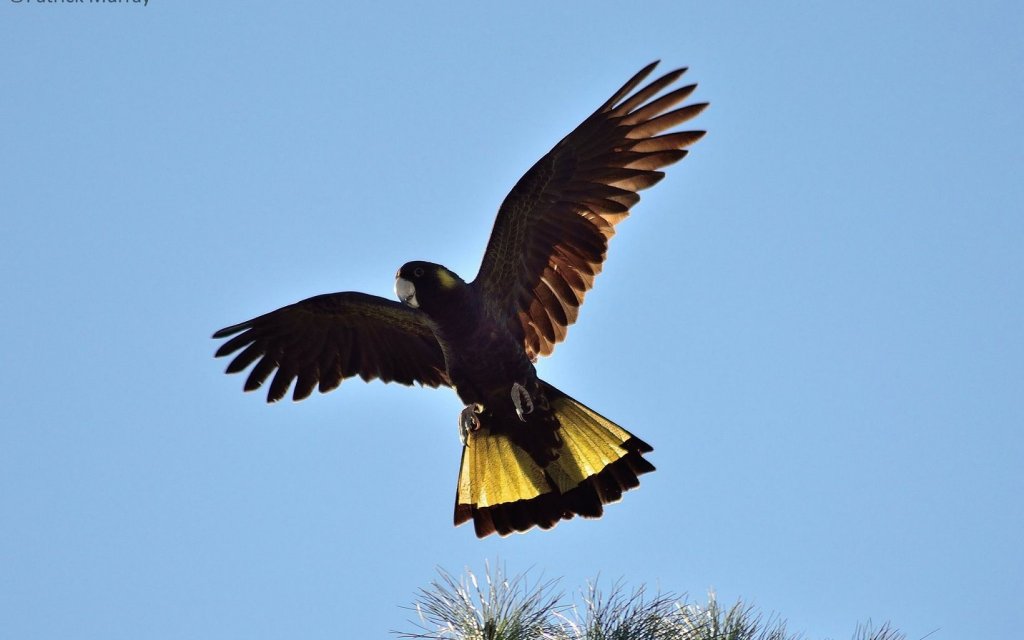Skip to content
 Yellow-tailed black cockatoo
Yellow-tailed black cockatoo
The yellow-tailed black cockatoo (Calyptorhynchus funereus) is synonymous
with Deep Creek and for many years it was the emblem for Southern Ocean Retreats.
During the early 1990s their numbers were relatively low earning them a ‘vulnerable status’.
Deep Creek Conservation Park was considered an important refuge and breeding ground
but in more recent years numbers have grown to the point where sightings
of large flocks in the Mount Lofty Ranges are not uncommon.
This is in part thought to be the result of the yellow-tailed black cockatoo having
learnt how to extract the seeds of pine cones from introduced pines (Seeds and
wood larvae are the two key elements of their diet). There are 6 species in Australia
and the yellow-tailed black cockatoo can reach 55-60cm once mature.
At first glance the bird appears completely dark brown to black but upon closer
inspection you will find contrasting yellow panels in the tail feathers as well as yellow check patches.
 Yellow tailed Black Cockatoo (Calyptorhynchus funereus),
Yellow tailed Black Cockatoo (Calyptorhynchus funereus),
Unlike their cousins, the Sulphur Crested Cockatoo whose harsh screech can be
heard from afar, the yellow-tailed cockatoo has a gentle call which they occasionally emit.
They have a distinctive flight action with deep slow paced wing beats which
makes them easy to recognize. They favour eucalypt woodland and pine plantations
so it comes as no surprise that they are often seen in Deep Creek or
the neighbouring State pine plantations, usually in flocks of 6 to 12.
Both sexes construct the nest in a large tree hollow lined with woodchips. Clutch size is
usually 2 eggs but typically only 1 egg survives. The chick remains in their care for the first 6 months.
 baby yellow-tail
baby yellow-tail





